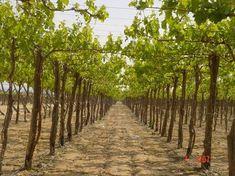
Egyptian grower and exporter Blue Nile is turning its attention to opportunities within the grape market, having previously focused on legumes and salad onions.
The company, under the leadership of Hisham Meleigy has succeeded in providing high quality produce to the UK multiples for the last decade. Managing director Meleigy says: “With BRC, EurepGAP and Nature’s Choice standards in our operations we endeavour to meet our customers’ requirements.
“By applying our own high standards we believe we can supply grapes to the specifications that our customers require, and by providing grapes from our own farms, we can ensure that all the standards are applied.”
Blue Nile has 190 acres coming into fruit for the first time this year and by 2006 it expects to have more than 350 acres yielding in excess of 2,500 tonnes.
Meleigy adds: “Egypt is now an important part of the grape season and we are working to extend our growing season. Many of the farms are employing Chilean and South African expertise to fine tune our growing operations. This will provide us with a product able to compete with the very best.”
Although this year’s growing conditions have not been ideal they have been an improvement on last season’s poor weather. Meleigy says: “Temperatures have been marginally lower than normal for this growing season. This means instead of May, our produce will be entering the UK in early June, although volumes will be much improved on last year.”
Blue Nile is also looking at introducing a selection of additional varieties in the coming years. “We are experimenting with three or four different varieties,” says Meleigy. “It will be a few years before we are able to go to commercial production, but the early signs are good.”
The UK is the prime focus of Blue Nile’s European exports. Meleigy says: “The UK has the highest specifications and procedures. If you want to be at the forefront of your field, you have to be supplying into the UK.
GRAPE GROWTH NEEDS WORK
One of the best known and most respected names in the fruit trade is that of Richard Hochfeld Ltd, a leader in the grape category. Kathy Hammond gauges opinion on the grape market from the firm as part of our four-week series focusing on the fruit.
According to Alan Guindi, of importer and supermarket category manager Richard Hochfeld Ltd, there is still a lot of work to be done in the grape sector to grow the product beyond simply an impulse purchase to a must-have feature in a typical shopping basket.
“There is definitely room for growth in the category,” says Guindi. “There is just nine to 12 per cent penetration and grapes are still largely an impulse purchase. This means that there is room for growth both by increasing market penetration and by making grapes a regular feature of the weekly shop.”
The potential might be there to grow the market, but the big question is how this can be achieved in such a tough arena where competition is not just from other fresh produce, but confectionery, dairy and other snack sectors. “Presentation is one area where more needs to be done and we are working on that with customers,” says Guindi. “We are also looking at further segmentation of the market, but that too is commercially sensitive.”
Another possibility is broadening the range of varieties. “The whole market is seedless-driven,” says Guindi. “On white grape, Thompson is the driver and on red it is Crimson, which is preferred over Flame from most sources. But now we are also starting to see some interesting black seedless varieties too.”
The organic segment of the market is tiny - a little more than one per cent, calculates Guindi - so in theory there is even more potential here for expansion. But the problem is one of offer. “At just over one per cent, organic grape uptake is small compared to say kiwifruit, where the segment is seven per cent of the total kiwifruit market,” he says. “The problem is one of availability: if there were more organic fruit available then the market would be bigger.”
But the boundaries are being pushed all the time across the globe as key producing areas seek to extend their growing season for grapes in general. “What we are seeing is extension with earlier white varieties at the beginning of the season and opportunities for better storage of Crimson seedless,” explains Guindi. This can therefore extend the season at both ends. These developments are happening in countries that are already established sources of good product such as Chile, Greece and Spain.
As far as the season goes this year, it has not been without its problems and shortages, and two different spells of rain in Chile have had an impact. But sights are now firmly fixed on the northern hemisphere. “We are coming to the end of the Chilean season, with supplies of Chilean red grape fast running out,” explains Guindi. “There is still some Indian grape around and Mexico will be next, although we do not bring in Mexican fruit. We will have supplies of red and white grapes from Egypt at the end of May switching from Indian white and Chilean red.”
Seasonal ups and downs are what makes the produce world go round and are something that the trade is well used to, but what has become a extra burden is the issue of pesticides. “We have to be very conscious of residues, for example on product from India and it is something we are very careful about,” says Guindi.



